
I worked as a design lead for the creation of a dashboard to track CO2 emissions—and reductions— for SIEMENS. During the 8-month project, I had an active role in the research phase and concept design, as well as stakeholder presentations.
Team Structure
Product
Managers
Business
& Growth
Product
Designers
Kick-off Workshop
We held working sessions with the SIEMENS team to better understand the views and expectations of different project stakeholders.
User Interviews
User interviews helped us better understand the needs of dashboard users—SIEMENS engineers, project managers, and energy experts.
Defining User Stories
After the user interviews, we defined key platform features and set priorities for the design of the dashboard.
Concept Creation
We established the flow of the dashboard with wireframes in Figma.
Prototype Creation
After designing the new concept and flow, we prepared detailed prototypes for use during usability tests
Project Description
Sustainium is a platform which encorporates data sets on CO₂e emissions across the whole value chain of single product units. Sustainium provides valueable insights on emission data and enable its users to derive applicable actions.

Situation
SIEMENS asked for a high-fidelity product prototype to present at WEF (World Economic Forum) about data sharing.
In the beginning, it was just a "Proof of concept" project.
The project took 2 phases;
1st phase was to focus on the validation of the idea.
2nd phase was to validating the product itself.
Tasks
During the 1st phase;
I was assigned to guide the product team with the methods they are going to use.
At the 2nd phase;
Meanwhile, when I was continued mentoring the team, I also started working hand zone for each step.
Activities
I was a part of the sprint plans. Evaluating the results of the followed methods were my main activities during the 1st phase of the project.
In phase 2, I started supporting the team as a designer as well. Most of the time, I sat together with the internal team and stakeholders to figure out what we needed to get this project successful. Defining the interviewees, creating the interview script, analyzing the interviews, creating the WF, UI, and prototype structures on Figma, maintaining the sprint plans with the team and stakeholders, preparing the workshop schedule, and choosing the methods we're going to use were my primary focuses.
Result
With the 1st phase result, SIEMENS had an internal presentation to the other managers and decided to invest more time in this idea and make it more tangible.By involving the right methods and getting strong feedbacks from the potential clients, at the end of the 2nd phase, SIEMENS had a decision to bring this product to life! 🎉🎉🎉
Project Process
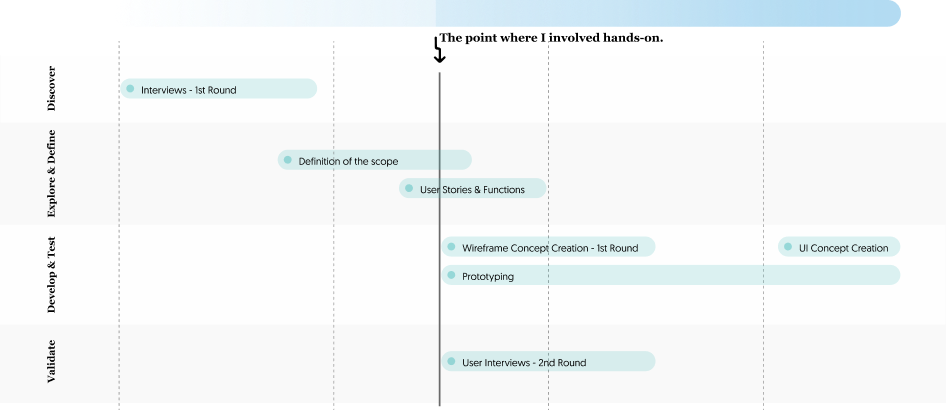
#Research
#Discover
The goal of this interview phase was to gather feedback on our concept and the prototype.We interviewed different stakeholder groups in order to gather different perspectives and requirements for the next version of the prototype. The interviews included general questions and a demo of the prototype, as well as specific questions to each expert.
Participants
Siemens
Product Managers
Partner
Product Manager
Suppliers
Questions Set
Siemens
Product Managers
Suppliers
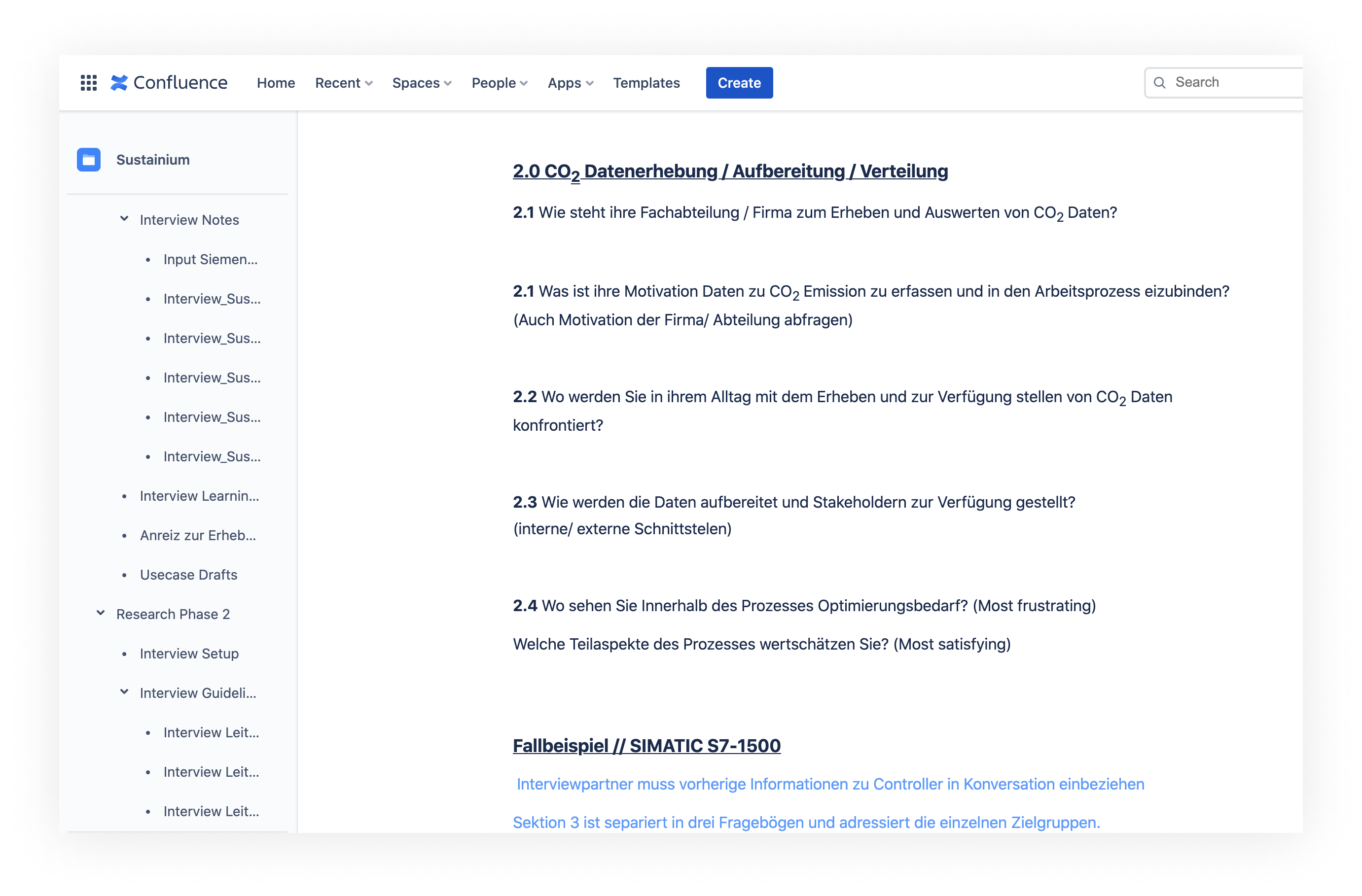
#Insights
#Define
Siemens Product Manager (PM) identifies that they are missing data on a component. PM expects it to have a high impact on the overall CO₂e emissions of their product.
Siemens PM wants to identify the components that cause the highest emissions throughout the production of a Simatic S-7 1500 SM532.
PM wants to see how much of the CO₂e emission of a supplied component is compensated.
They therefore access the component detail panel to get an overview.
Supplier gets the request that their customer wants to access their CO₂e data.
#Define

Product list sample
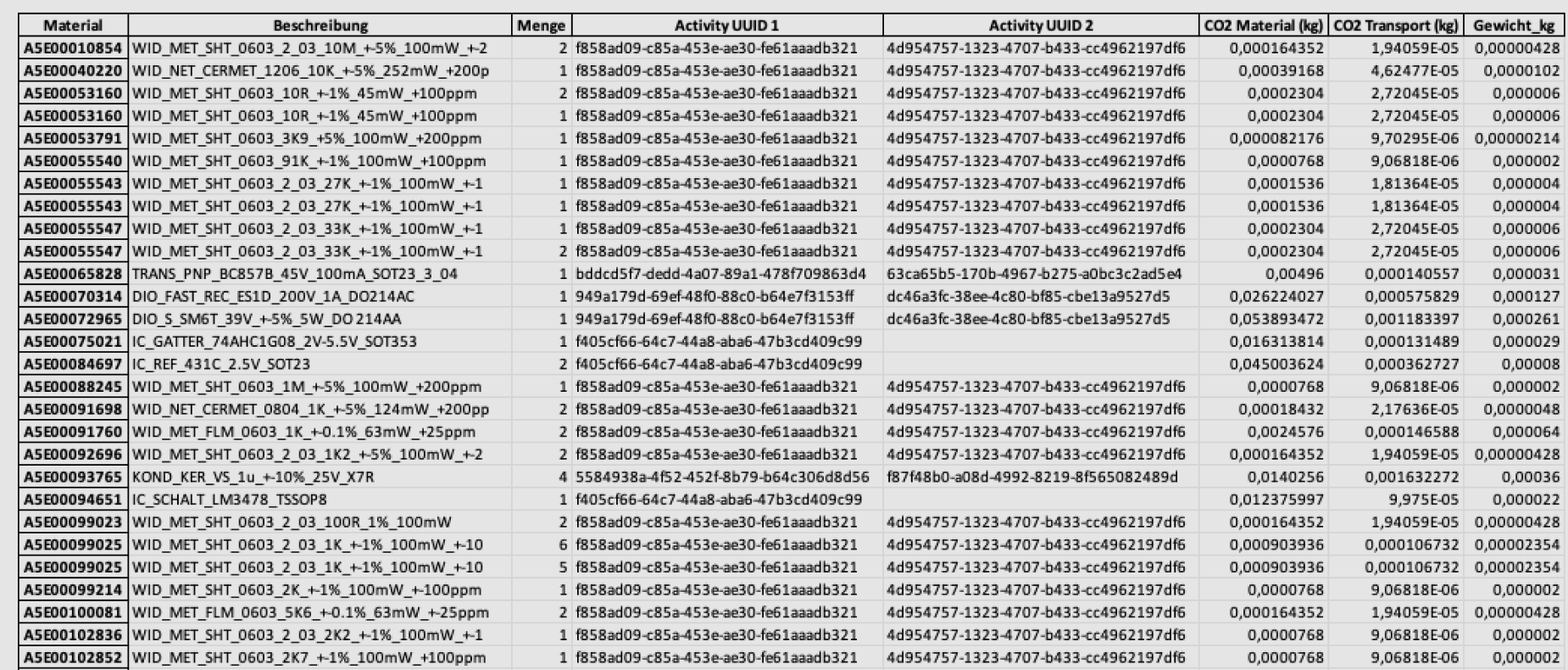
Data chart Sample
#Ideation
#Develop
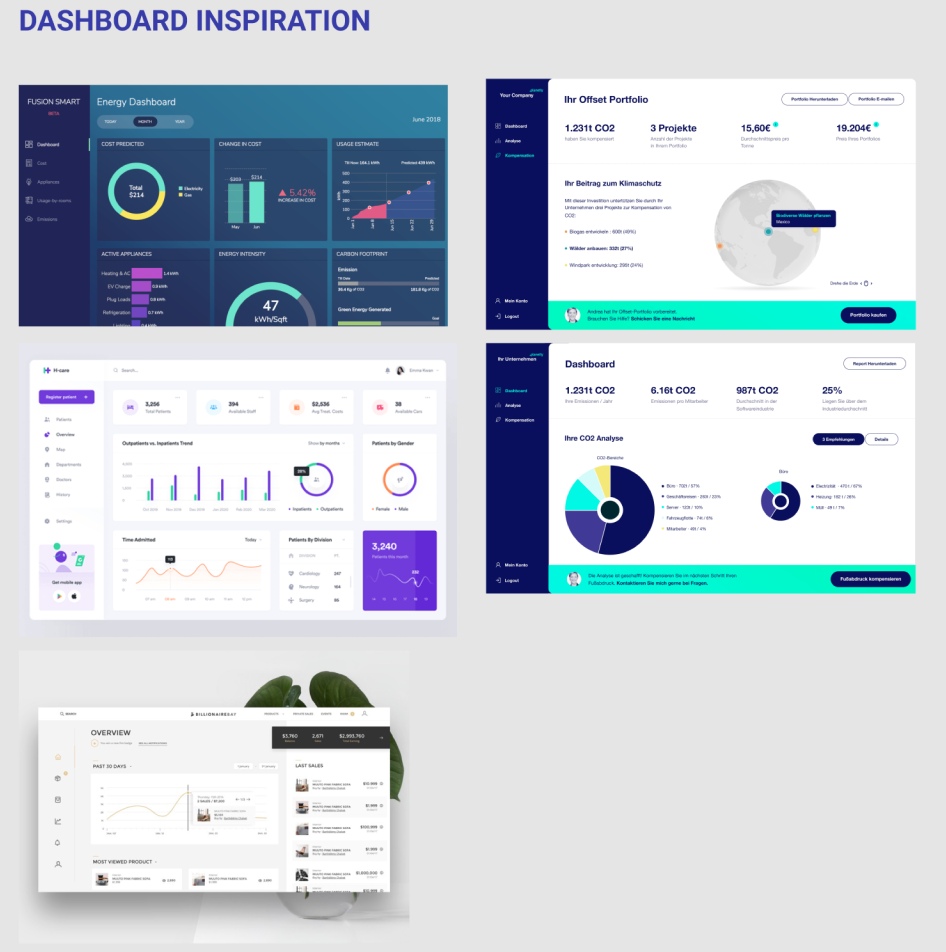
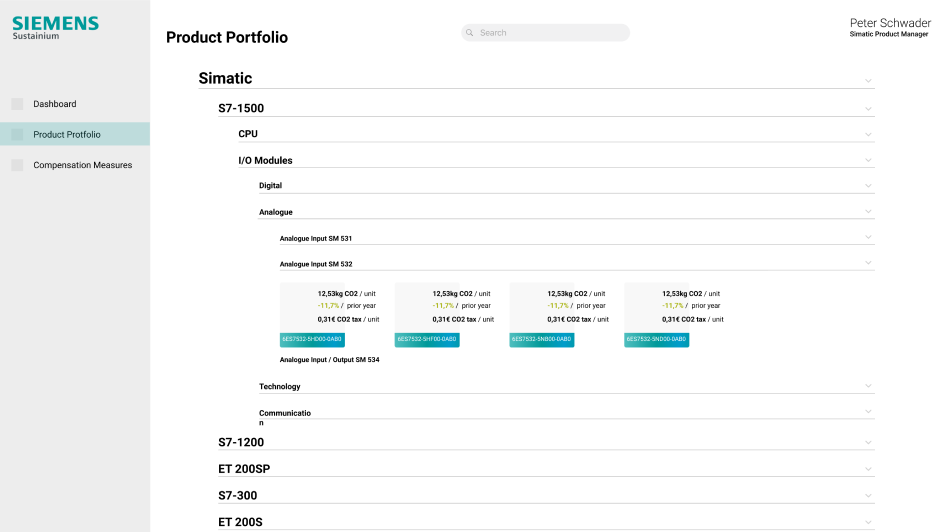
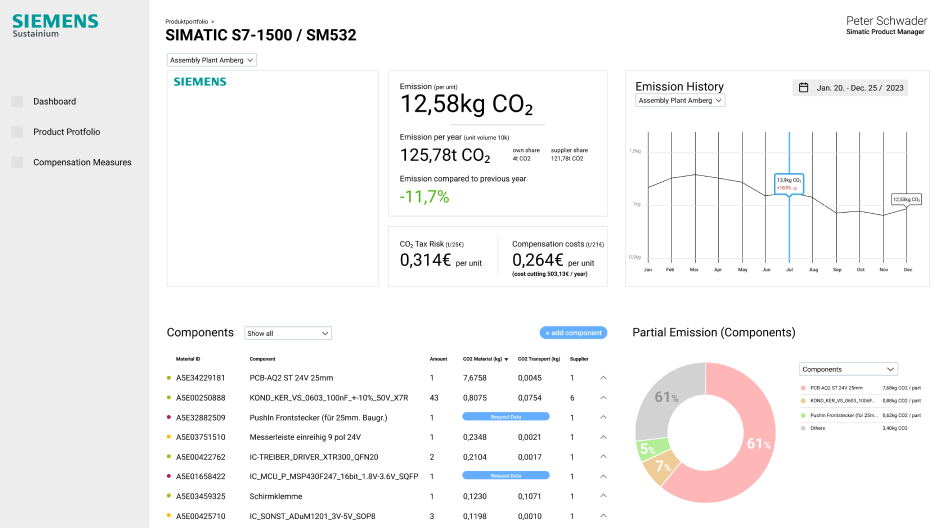
#Prototype
#Deliver
My Role & Contribution
Situation
From the very beginning, SIEMENS aimed to make this platform outside the corporate identity of the company.
Tasks
We tried to take out the first design concept as a team, without appearing in a very technical structure but also not being very colorful.
Activities
To make interface evaluations in the process with the designer in the team. Considering that a company like SIEMENS would not decide to create a free design from its corporate identity, we focused especially on the component system in the project.
Result
The first design concept was approved by SIEMENS and we continued to work on it and created the first product prototype flow.
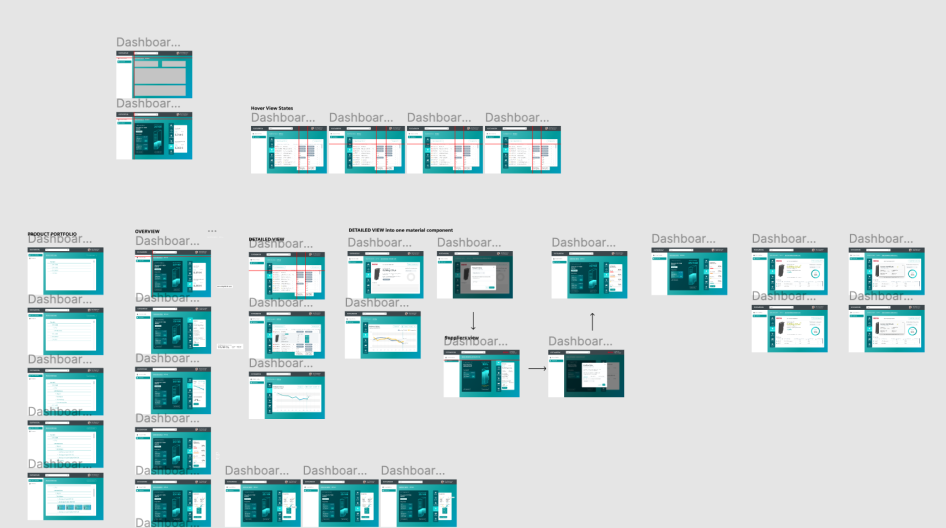
#Insights
#Define
My Role & Contribution
Situation
After the first round of user interviews, we had the opinions of the enterprises about the idea. However, this information was insufficient for us to start product design in the second phase of the project.
We needed more information on what potential user groups expect from the product.
Tasks
In this process, my task was to create a user interviews question set and to ensure that we could reach the outputs focused on the product by making sure that interviews were made with the right users.
Activities
1- Preparing the user interviews question set.
2- Conducting user interviews
3- Evaluating the outputs after user interviews with the jr designers in the team.
4- Creating analysis and presentation of user interviews.
Result
As a result of the interviews, information was collected from 2 different user groups. By learning the expectations of NGO and product managers from the platform, an infrastructure was created for the creation of main functions.
Interview
Partners
Average minutes per
Interview
Content
Clusters
Interview Moderation Topics
1- Opening
2- Presentation of the prototype
3- Expert specific questions
4- Siemens material procurement / Heinz Poxleitner
5- Environment NGOs / decarbonisation experts
Tech:
Data security,
Data quality,
corporate compliance.
Factory PM:
Workflow,
Documentation,
Applicability,
Process optimization.
NGO:
Requirement,
Compensation, Tax,
Reinvestment,
Certification.
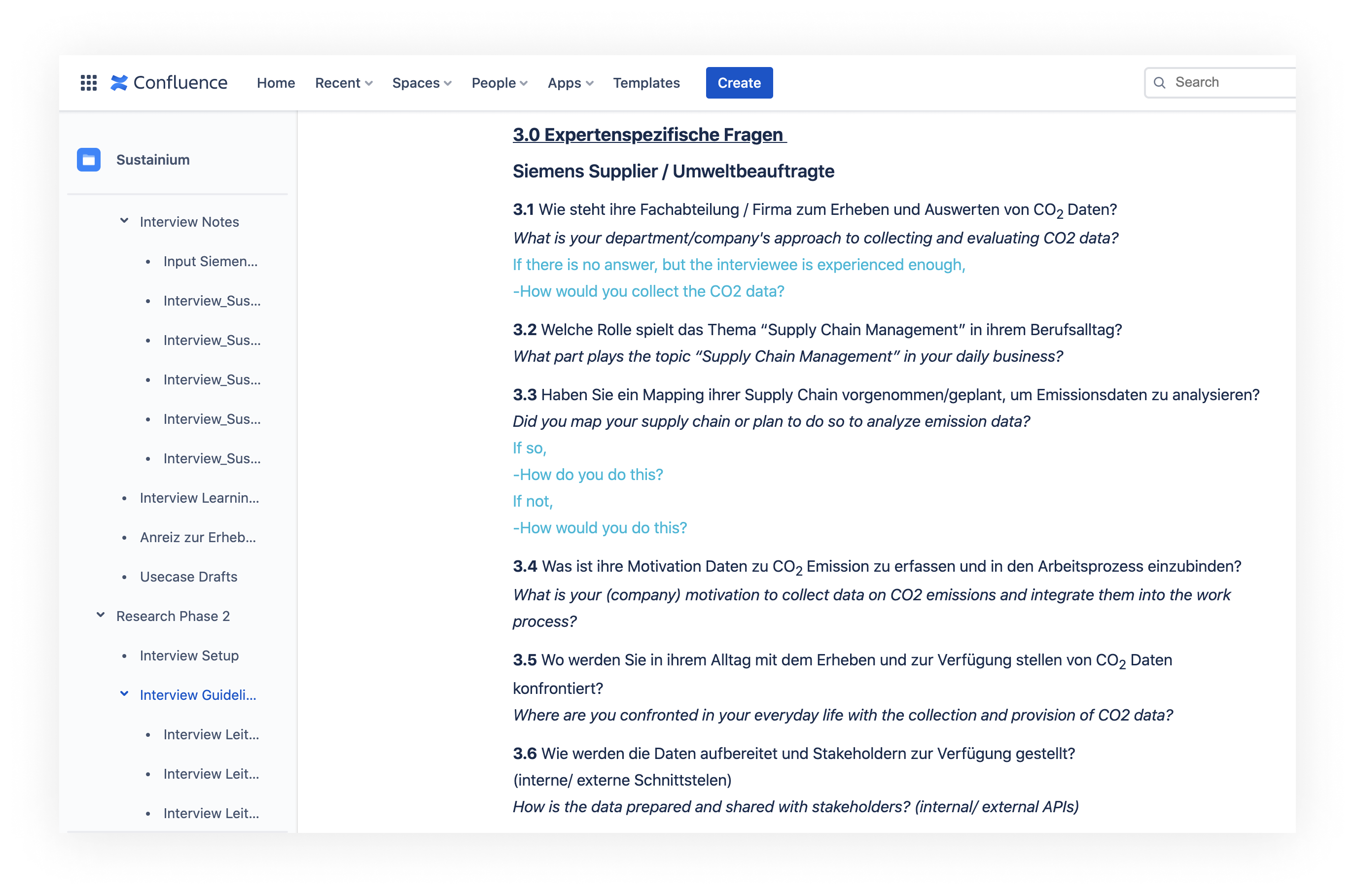
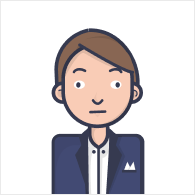
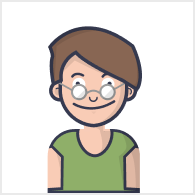
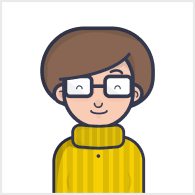
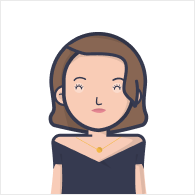
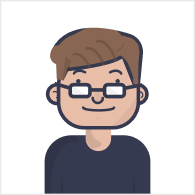

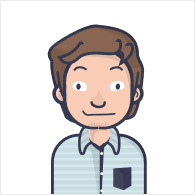
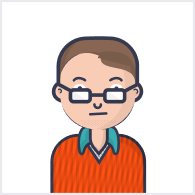
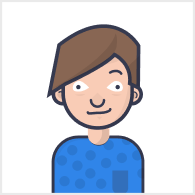

Arçelik tracks scope 1 and 2 also making investments to track scope 3. They have their own excel sheet to add the data that they have already. However, for most of the projects they can't get the data from different suppliers. For the unknown data, they follow the literature to get insights and make calculations based on emission factors.

Focus is on how to ensure data quality and reliable input, as well as providing PM with simulations/suggestions based on the data identifying levers to reduce CO2e, instead of compensating.
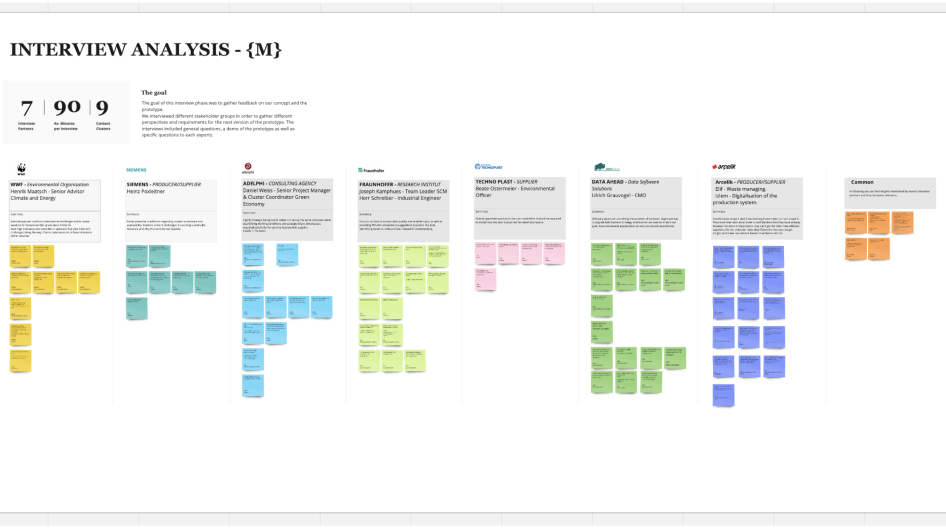
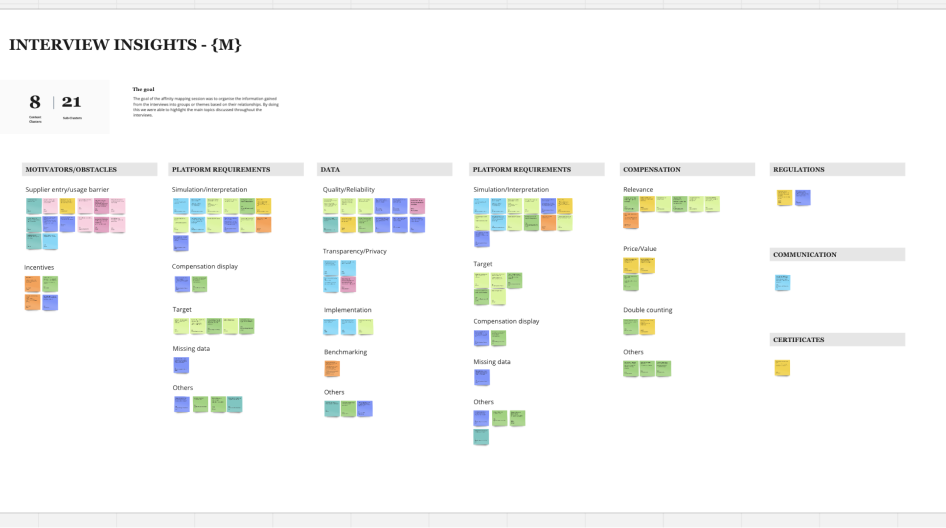
#Insights
#Define
My Role & Contribution
Situation
Although the information obtained during the research process shows that we are on the right track, we had very little data to start product development. With the participation of SIEMENS, we decided to organize a full-day workshop in order to get answers to all the questions in our mind during this process.
Tasks
Decision of the methods to be used in the workshop. To decide which designer will lead which session during the workshop and to reach the targeted information.
Activities
1- Creating the workshop time flow.
2- Adapting the methods to be used for the workshop.
3- Designing workshop materials on Miro.
4- Managing the sessions with the stakeholders (teams) during the workshop.
Result
After the workshop session, we had a story that everyone has a common opinion about the whole flow of the product.Approximately 8 main flows and 42 user stories emerged that we needed to design in this story.
Agenda & Content
The goal was to identify the most important User Stories. User Stories help us translate requirements into actual user needs while identifying the problem we solve. By giving every participant 7 votes to choose the User Stories they deemed most relevant we were able to identify the ones that need to be tackled in the next phase.

As a product owner, I need to be able to forecast the impact a change in my portfolio/material will have in order to make the right decision.
As a product owner, I need a way to know which measures to take in order to reduce the CO2 emissions of my product.
As a product owner, I want to be shown the levers that can improve my PCF.
As a supplier, I need to know that my shared PCF value is not shared with my competitors in order to protect confidentiality pricing data.
As a supplier, I would like to make sure my supply chain stays confidential in order to not jeopardize trust.
As a supplier, I need to make sure my efforts and investment to use the system are sustainable in order to increase trust in the system.
As a product owner, I need an easy way to enter my data in order to track emissions.
As a supplier, I would like to have a governmental regulatory frame for system input and data requirements in order to know my efforts won’t be lost.
As a product owner, I need to be able to have standardized emission data in order to compare suppliers.
#Insights
#Define
My Role & Contribution
Situation
Revealing the product functions by combining the obtained main flows and user stories in a general concept.
Tasks
Preparation of a flow map to view the overall product frame.
Activities
1- Creating a product journey map as a design team and presenting it to stakeholders.
2- To understand where we are lacking in content and information in order to start designing.
3- Creating a road map and sprints with the PM for the product development plan.
Result
As the product development team, we were presented to the customer where we were missing, and a road map was created to eliminate these deficiencies.

Main Product Pages
#Ideation
#Deliver
My Role & Contribution
Situation
High quality poc (Proof of concept) design for presentation at WEF (World Economic Forum)
Tasks
Creating the UI concept and starting the prototype process.
Providing guidance to other designers in the team.
Presentation of the design process to the stakeholders.
Activities
1- Creation of the design concept.
2- Icon designs.
3- Design of the page structure.
4- Applying correct information to design.
5- Creating and applying component structure during the design process.
6- Prototype creation to understand the general experience.
Result
After the workshop for each main function, the tasks were shared with Since the project was considered open source, SIEMENS was waiting for a design language other than its own corporate identity to be created during this period.
However, in the last week of the project, it was decided to apply the corporate identity of SIEMENS to the product. design team, and the first design flows and prototypes were started.
User Interface
Concepts
Full Prototype
Flows
Screens
*2 UI concepts
Designers
Dedicatedly

UI Concepts

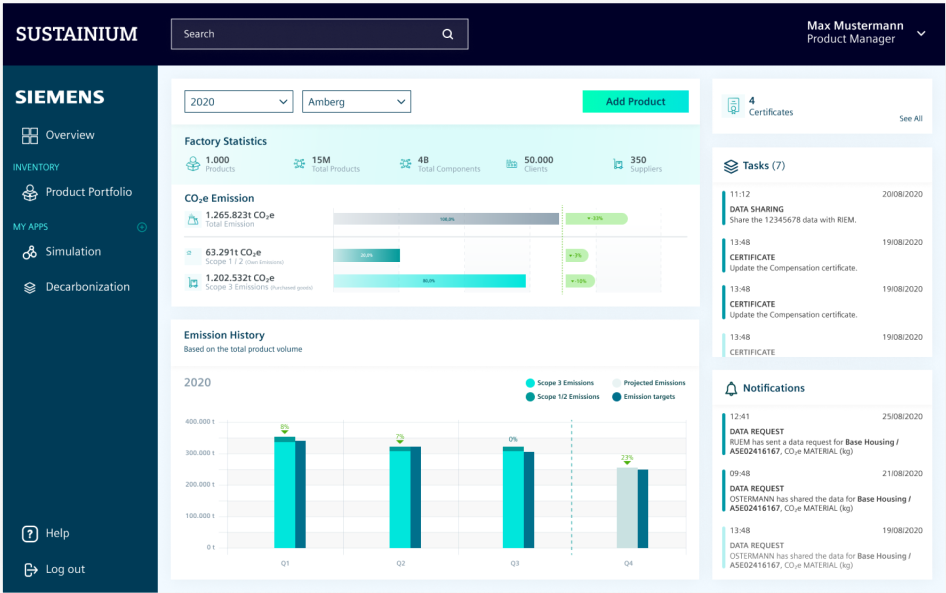

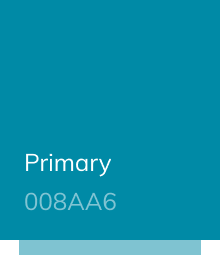



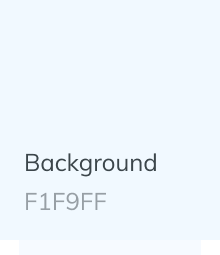






.svg)



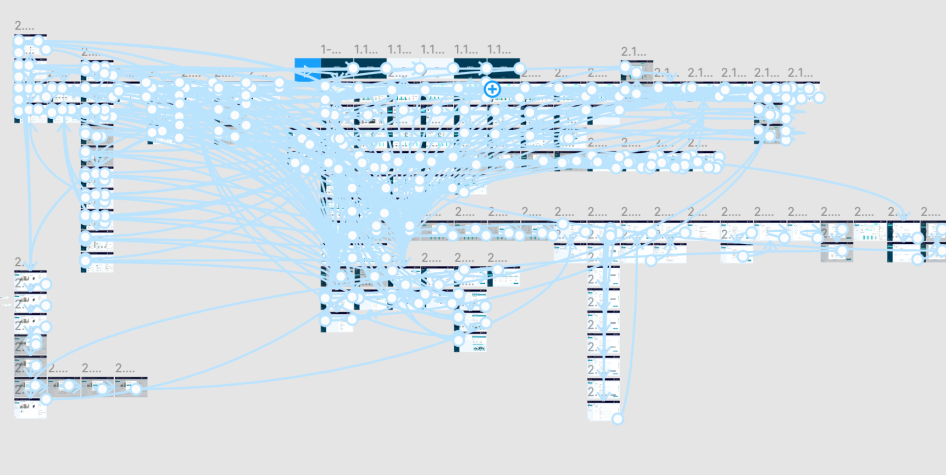
%20copy.gif)